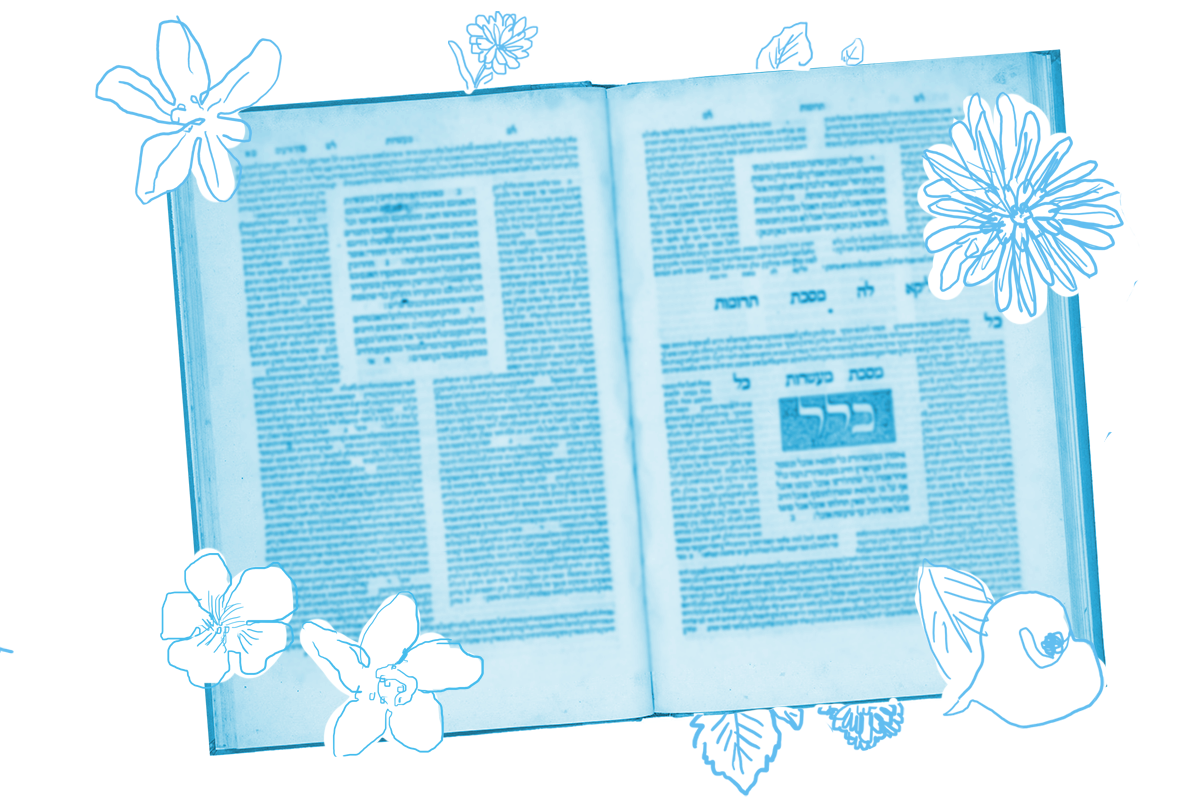Today’s daf has a wealth of teachings about creation, from discussions about how Adam and Eve were originally created, to descriptions of their wedding, to explorations of how and why demons came into existence. There’s so much creativity and imagination here.
One of the stranger rabbinic debates concerns the creation of Eve.
Rabbi Yirmeya ben Elazar also said: Adam was first created with two faces, one male and the other female. As it is stated: “You have formed me behind and before, and laid Your hand upon me” (Psalms 139:5). Similarly, it is written: “And the tzela, which the Lord, God, had taken from the man, He made a woman, and brought her unto the man” (Genesis 2:22). Rav and Shmuel disagree over the meaning of the word tzela: One said: It means a female face, from which God created Eve; and one said: Adam was created with a tail [zanav], which God removed from him and from which He created Eve.
The Talmud offers two different origin stories for womankind. Rabbi Yirmieya ben Elazar argues that Adam was first created as a two-faced, double-bodied being who was eventually split into dimorphic male and female beings. An earlier rabbi argues that, in fact, Adam was first created alone, but had a tail, and God removed the tail and used it as the foundation for the creation of woman.
Anyone who has seen a Marvel movie knows that origin stories are an important clue to understanding a character’s motivations and ambitions. And these are two profoundly different stories about the origin of woman. Was she created with man, originally side-by-side with him, made out of the same stuff and then separated out? Or was she a secondary creation, created out of Adam’s tail and, like a tail, meant to stand behind him? Understanding how woman was created can tell us a lot about who the rabbis think women are supposed to be, especially in relation to men.
With your help, My Jewish Learning can provide endless opportunities for learning, connection and discovery.
But the discussion on today’s daf doesn’t give us a clear answer. Instead, the Talmud shows that both positions can be convincingly read into the Torah. To the rabbis of the Talmud, neither position is more convincing than the other. And the discussion concludes without any resolution – neither about how woman was created, nor about what that means for who the rabbis think women are.
This open ending allows the reader to choose. Given that both positions – woman as co-head, and woman as tail – reflect a coherent reading of the text, it is up to the reader to decide which position makes the most sense within their worldview. We can’t fall back on facile references to tradition, or to the (one) way that things always were, because as we can see from today’s daf, there has never been only one tradition. Instead, this daf challenges us to interrogate ourselves and our communities about the stories we tell about men and women, and how those continue to shape what it means to be a man or a woman in the world today.
Read all of Eruvin 18 on Sefaria.
This piece originally appeared in a My Jewish Learning Daf Yomi email newsletter sent on August 27, 2020. If you are interested in receiving the newsletter, sign up here.



